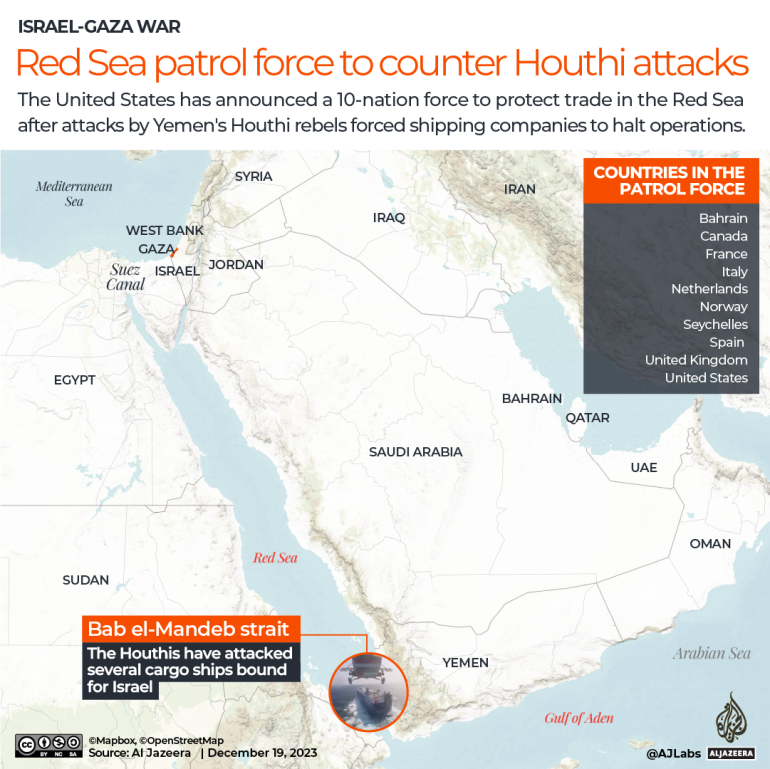Red Sea War Aftermath: Rebuilding and Reshaping Futures


Rebuilding and Reshaping Futures: Red Sea War Aftermath
The aftermath of war leaves indelible marks on regions, communities, and international relations. In the context of the Red Sea, where conflict has taken its toll, examining the Red Sea War Aftermath unveils the challenges and opportunities inherent in the process of rebuilding and reshaping futures.
Humanitarian Challenges and Reconstruction Efforts
The human cost of war in the Red Sea region is evident in the aftermath. Displaced populations, damaged infrastructure, and disrupted livelihoods present significant humanitarian challenges. The first step in the Red Sea War Aftermath involves concerted efforts in reconstruction, providing aid to affected communities, and addressing the immediate needs of those impacted by the conflict.
Economic Rehabilitation and Trade Recovery
The economic fabric of the Red Sea region is intricately woven into global trade networks. The Red Sea War Aftermath necessitates economic rehabilitation efforts to rebuild trade routes, revive economic activities, and attract investments. The recovery of the economic landscape is crucial for the stability and prosperity of nations affected by the conflict.
Political Realignment and Diplomatic Initiatives
Post-war periods often witness political realignment and the need for diplomatic initiatives. The Red Sea War Aftermath prompts nations to reassess their geopolitical positions, forge new alliances, and engage in diplomatic efforts to foster regional stability. The delicate balance of power in the aftermath requires careful navigation through diplomatic channels.
Security Challenges in the Post-War Landscape
Even after the cessation of hostilities, security challenges persist in the post-war landscape. The Red Sea War Aftermath demands a comprehensive approach to address residual security threats, prevent the resurgence of conflicts, and maintain stability. Nations in the region must collaborate to establish effective security mechanisms and deter potential sources of instability.
Environmental Rehabilitation and Sustainability
The environmental toll of war adds another layer to the Red Sea War Aftermath. Environmental degradation, pollution, and the impact on marine ecosystems require focused rehabilitation efforts. Integrating sustainability into post-war reconstruction is essential to ensure that the environmental consequences of the conflict do not compromise the long-term well-being of the Red Sea region.
Cultural Preservation Amidst Destruction
The preservation of cultural heritage becomes a critical aspect of the Red Sea War Aftermath. War often results in the destruction of historical sites and cultural artifacts. Rebuilding includes efforts to preserve and restore cultural heritage, fostering a sense of identity and continuity amidst the challenges of reconstruction.
Social Healing and Reconciliation
Healing the social fabric torn by conflict is a paramount task in the Red Sea War Aftermath. Communities grapple with trauma, displacement, and the scars of war. Social healing and reconciliation initiatives aim to mend the wounds, foster unity, and build a foundation for harmonious coexistence in the post-war era.
International Collaboration for Sustainable Development
The Red Sea War Aftermath underscores the importance of international collaboration for sustainable development. Nations, international organizations, and non-governmental entities must join forces to support the affected regions in rebuilding, ensuring that the development is sustainable, inclusive, and aligned with the broader goals of global stability.
Lessons Learned and Future Preparedness
Reflecting on the Red Sea War Aftermath provides valuable lessons for future preparedness. Nations must assess the root causes of the conflict, implement measures to prevent recurrence, and foster a culture of diplomacy and conflict resolution. Learning from the aftermath is essential for building a more resilient and peaceful future.
Charting a New Course: Red Sea War Aftermath
In conclusion, the Red Sea War Aftermath is a complex landscape that demands holistic approaches to rebuilding and reshaping futures. From humanitarian challenges to economic recovery, political realignment, and environmental rehabilitation, the aftermath requires collaborative efforts. Charting a new course in the Red Sea region involves addressing the immediate aftermath and laying the groundwork for a sustainable and peaceful future.







